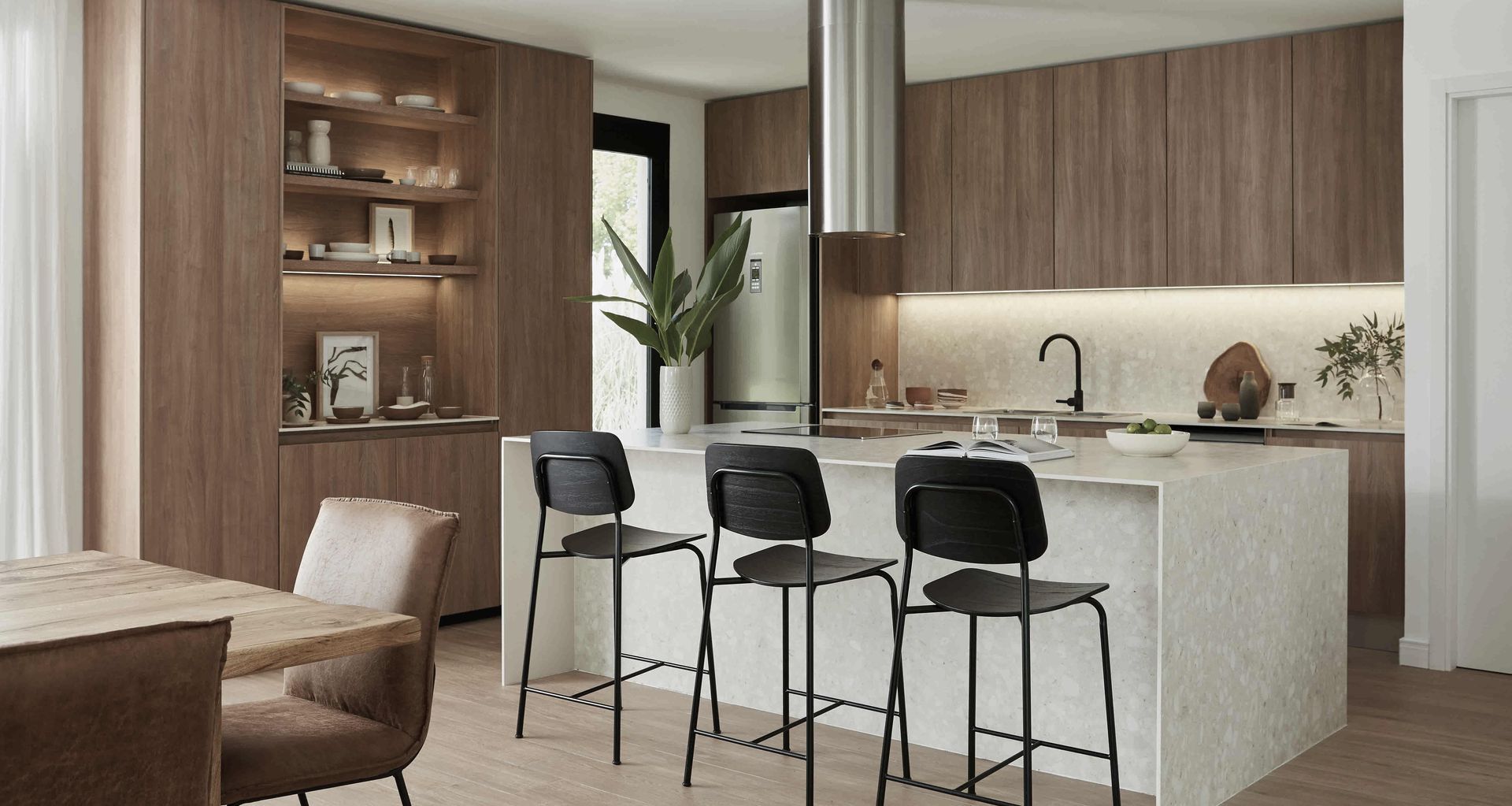Go green: how to design a healthy, sustainable kitchen
Written by
08 June 2023
•
3 min read

It’s better for you, the environment and your hip pocket – going green in the kitchen is a smart move for any renovator. Choosing long-lasting, sustainable materials, energy-efficient appliances and a layout that maximises light and air flow not only reduces your carbon footprint but helps you create a healthier home that costs less to run.
Read on to discover the key elements to include in a sustainable kitchen.

Design for longevity
When designing your kitchen, plan for your needs now and in the future when it comes to elements like storage, bench space, meals areas and charging stations.
It’s wise to take a long-term view when it comes to aesthetics too; choose colours and cabinetry that speak to your sense of style so you’ll love your kitchen for years to come. And bear in mind; timeless cabinetry profiles and neutral tones tend to have more staying power than uber-fashionable ones, which can quickly date.
Choose materials wisely
An eco-friendly kitchen starts with sustainable materials. When looking at materials for your benchtops and splashbacks, consider how they are made, whether they are durable and practical enough to last the distance, if they have been produced in carbon-neutral conditions, and whether they can be recycled or repurposed at the end of their use.
Neolith high-performance sintered stone surfaces are a sustainable, beautiful and healthy option for kitchens. Fully recyclable and made from 100 per cent natural materials in carbon-neutral conditions, they are considered the most durable and environmentally architectural surfaces on the market for indoor and outdoor environments. Neolith surfaces can withstand water, heat, scratches, stain and UV radiation, which means they will look great and perform brilliantly in your kitchen for decades.
Go low- to no-VOC
Paint, composite wood products, flooring, resins and adhesives can all contain toxic chemicals that, once installed in your home, release ‘off-gas’ VOCs (volatile organic compounds), which are known to be harmful to human health.
For a safer alternative, seek out materials for your kitchen with low or no VOC content. These include low- or no-VOC paint, eco-friendly surfaces made from natural materials such as Neolith sintered stone, low-emission E1-grade MDF or plywood, solid timber or bamboo carcasses made with chemical-free glues, and reclaimed timber, cork or linoleum flooring.
Include passive design features
If you’re embarking on an extensive kitchen renovation, now’s the time to include passive design features that will lower your power bills and make your kitchen a more pleasant place to be.
Maximise ventilation and natural light with well-placed windows, incorporate shading, such as an awning or planting, to optimise winter sun and block out harsh summer sun (which reduces your reliance on artificial heating and cooling), and consider adding a skylight for that extra daylight boost.
Opt for energy-efficient appliances, taps & lighting
Choosing energy-efficient appliances, lighting and tapware can reduce your environmental impact and slash hundreds of dollars a year from your electricity and water bills.
When choosing a new fridge, dishwasher or oven, check the energy-star rating. Most products are rated from one to six stars, with more stars saving you more on running costs, but some super-efficient models today can go as high as 10 stars.
Install energy-efficient LED light bulbs and water-saving taps with flow restrictors, and consider switching from gas to induction cooking, which is cheaper to run and doesn’t affect air quality.